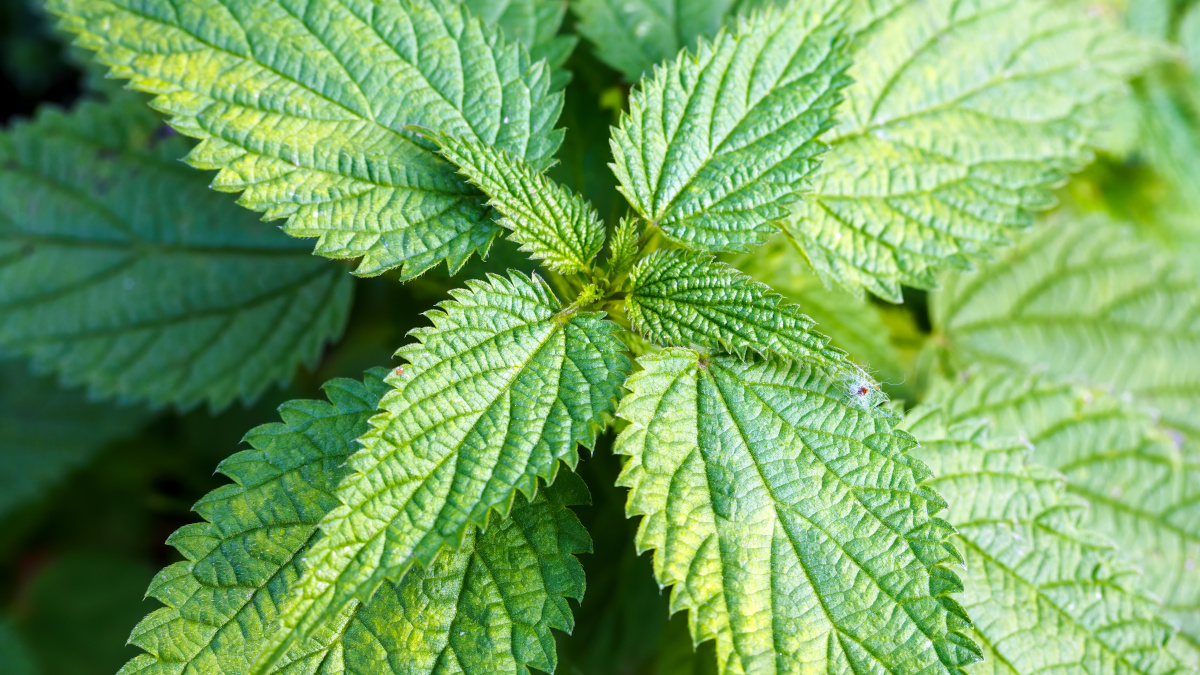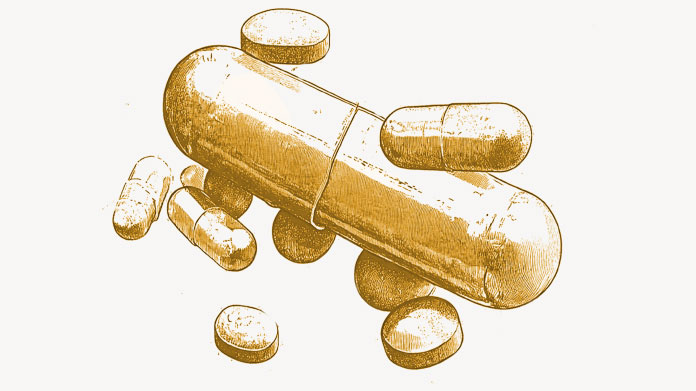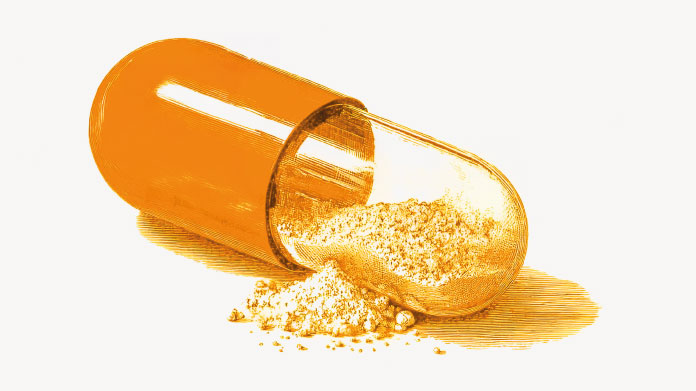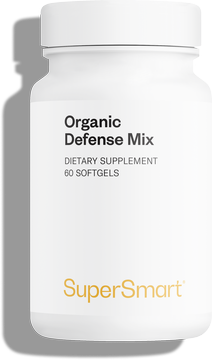Health: the impressive benefits of nettle supplements
Nettle is a plant that grows abundantly along country lanes. Your bare legs may not appreciate being stung by it, but nettle is actually full of health virtues when you know how to use it .... Discover its benefits now.

What exactly is nettle?
Nettle Urtica dioica, also known as stinging nettle, or common nettle, is a hairy-leaved plant from the Urticaceae family. Between 50cm and 1m in length, it is very common in Europe and is used in various forms.
While gardeners often make a nettle slurry to apply as an insect repellent, many people are unaware that it is also used for its medicinal properties.
A plant known by everyone
At some point in our lives, we’ve all fallen foul of nettles, and the memories are painful: burning sensations, itching, blisters. Our grandmas would apply vinegar to the affected area to soothe the pain but the unpleasant feeling would still last for hours.
Nettle’s infamous stinging hairs are actually cone-like outgrowths called trichomes, the points of which break on contact with the skin, releasing formic acid and histamine. To pick nettle without being stung, you simply need to pinch the stem at its base and pull upwards. This way, the trichomes cannot get stuck in the skin.
Since the dawn of time, nettle has been used by herbalists and phytotherapists who have recognized its benefits for health.
But what does it actually contain?
Nettle is full of good things:
- vitamins B, E, C and provitamin A;
- complete proteins (8 grams per 100 grams in fresh leaves);
- iron (7.8 grams per 100 grams) ;
- natural pigments called flavonoids;
- and minerals (potassium, calcium, zinc, magnesium, manganese, silica) (1).
Adding nettle to your diet increases your intake of these elements, all of which help the body function properly, without adding calories. Indeed, this plant has only 82 kcal per 100 grams of fresh leaves.
The benefits of nettle: immunity, respiration, prostate ...
Nettle has many excellent health benefits. It supports:
- the immune system;
- the respiratory system;
- the cardiac system;
- healthy skin, by supporting sebum secretion in particular;
- the osteo-articular system (bones and joints);
- and reinvigoration of the body (2-7).
Nettle also contains substances that promote diuretic function (increased urine production), which is excellent for supporting urine flow in men suffering from an enlarged prostate (8).
How can you incorporate nettle into your diet?
Every part of the plant can be consumed: the leaves, stems and roots. But you still need to know how to prepare them to enjoy their benefits. Here are four different ways in which to consume nettle in order to benefit from its properties:
- in the form of a fresh juice: wash the leaves and stem of the plant and place in a juicer. Drink 5-10ml of the extracted juice three times a day. The juice only keeps for a few hours;
- in the form of a herbal tea made from dried leaves: leave 2-5 grams of nettle to infuse in 150ml of simmering water for 10-15 minutes. Drink a maximum of 500ml of this tea a day;
- as a decoction of dried roots: add 2 grams of dried roots to 200ml of cold water. Bring to the boil, allow to bubble for 1 minute, then remove from the heat. Let it rest for 10 minutes before straining the brew and drinking the liquid;
- as a dietary supplementin the form of capsules (such as the nettle extract in our formulation Inflarelief).
Nettle supplements
Dietary supplements containing nettle are useful for a number of reasons:
- not everyone is able to regularly pick fresh nettles;
- some people are worried about getting stung and so prefer not to prepare nettles themselves;
- and others dislike the taste of nettles, whether in a tea or soup;
- and most importantly, good quality supplements offer a high content of active ingredients.
You can obtain the benefits of nettle by taking a selected synergistic formulation rich in plant extracts (such as the supplement Inflarelief, which combines extracts of nettle, cat’s claw for immunity, ginger for vitality, rosemary, bromelain, etc.)
As mentioned, nettle is also a valuable aid for men suffering from prostate problems. If that includes you (it normally develops after the age of 40), a nettle supplement such as Nettle Root Extract will help to facilitate micturition meaning you have to get up less often in the night to urinate.
For prostate problems, we’d also recommend saw palmetto which also supports healthy urinary function (9), and African plum tree or pygeum, the bark of which is rich in beta-sitosterol and supports the health of the prostate, bladder and lower urinary tract (10). Common nettle, saw palmetto and African plum are actually combined, along with other compounds, in specific formulations (such as ProstaNatural Formula).
References
- Rutto LK, Xu Y, Ramirez E, Brandt M. Mineral Properties and Dietary Value of Raw and Processed Stinging Nettle (Urtica dioica L.). Int J Food Sci. 2013;2013:857120. doi:10.1155/2013/857120
- Dhouibi R, Affes H, Ben Salem M, Hammami S, Sahnoun Z, Zeghal KM, Ksouda K. Screening of pharmacological uses of Urtica dioica and others benefits. Prog Biophys Mol Biol. 2020 Jan;150:67-77. doi: 10.1016/j.pbiomolbio.2019.05.008. Epub 2019 Jun 1. PMID: 31163183.
- Kumaki Y, Wandersee MK, Smith AJ, Zhou Y, Simmons G, Nelson NM, Bailey KW, Vest ZG, Li JK, Chan PK, Smee DF, Barnard DL. Inhibition of severe acute respiratory syndrome coronavirus replication in a lethal SARS-CoV BALB/c mouse model by stinging nettle lectin, Urtica dioica agglutinin. Antiviral Res. 2011 Apr;90(1):22-32. doi: 10.1016/j.antiviral.2011.02.003. Epub 2011 Feb 19. PMID: 21338626; PMCID: PMC3085190.
- Kregiel D, Pawlikowska E, Antolak H. Urtica spp.: Ordinary Plants with Extraordinary Properties. Molecules. 2018;23(7):1664. Published 2018 Jul 9. doi:10.3390/molecules23071664
- https://open.efsa.europa.eu/questions/EFSA-Q-2010-00451
- https://open.efsa.europa.eu/questions/EFSA-Q-2008-3499
- https://open.efsa.europa.eu/questions/EFSA-Q-2008-2885
- Ghorbanibirgani A, Khalili A, Zamani L. The efficacy of stinging nettle (urtica dioica) in patients with benign prostatic hyperplasia: a randomized double-blind study in 100 patients. Iran Red Crescent Med J. 2013;15(1):9-10. doi:10.5812/ircmj.2386
- Kwon Y. Use of saw palmetto (Serenoa repens) extract for benign prostatic hyperplasia. Food Sci Biotechnol. 2019;28(6):1599-1606. Published 2019 Apr 17. doi:10.1007/s10068-019-00605-9
- Ishani A, MacDonald R, Nelson D, Rutks I, Wilt TJ. Pygeum africanum for the treatment of patients with benign prostatic hyperplasia: a systematic review and quantitative meta-analysis. Am J Med. 2000 Dec 1;109(8):654-64. doi: 10.1016/s0002-9343(00)00604-5. PMID: 11099686.
Keywords
10 Hours
Ordering was easy and the product was…
Ordering was easy and the product was delivered with no problems. Appreciated that I was notified when it would arrive. Thanks!
MascarC
5 Days
Great customer service - responsive …
I ordered from them and my item was unavailable for sometime. I was super happy when they reactivated my order and shipped my item which arrived very quickly. Great customer service.
Ruth Rueter
6 Days
Super fast shipping
Super fast shipping
Donald Borling
9 Days
Reputable companysearch and the number of…
The research and the number of selection of products.
NAKHJAVAN Shervin
23 Days
The Anti Aromatase is a great product
The Anti Aromatase is a great product. You just need to have constant inventory. Recently this product has been out of stock.
GEORGE Verne
24 Days
Great help on chat
Great help on chat. Knowledgeable and friendly.
Jason Argos
28 Days
Customer service was fast and friendly.
Customer service helped to stop the transaction process of the subscription. I appreciated that.
Greenie
28 Days
I order here due to the high quality of…
I order here due to the high quality of the products and the quick delivery of items - thank you
Barbara J
29 Days
SuperSmart's Eye Pressure supplements: highly recommended!
I purchase SuperSmart's Eye Pressure supplements regularly for over 5 years, and gotta say they are truly a wonderful product for my Glaucoma. Highly recommended if you have eye pain from your Glaucoma.
D. Martinez
34 Days
Quick service
Quick service
MONELL
35 Days
Speedy service.
Speedy service.
ROSENTHAL Marvin
38 Days
Clear website- Efficient
Clear website. Excellent search engine and fast delivery!
Mohamad Hussein
41 Days
They have great products.
They have great products.
Vickie
41 Days
Great Shipping Time!
You Have A Great Shipping Time! Praise The Lord!
DMHoge
43 Days
Doctor Recommended!
Good pricing, very good availability, doctor recommended (couldn't find what I needed anywhere else), and it took only a week to arrive (which I can't complain about).
Al





